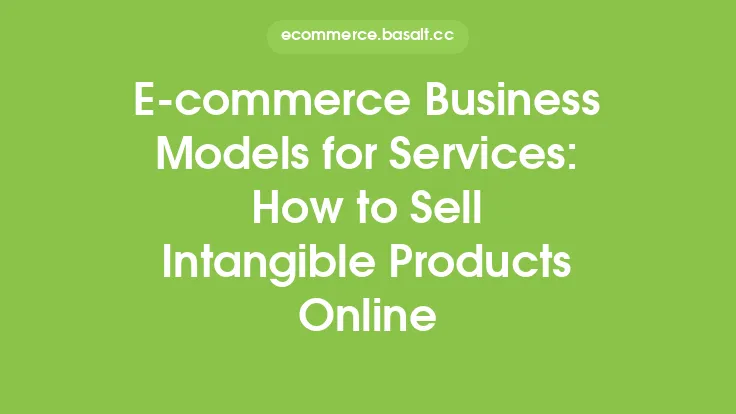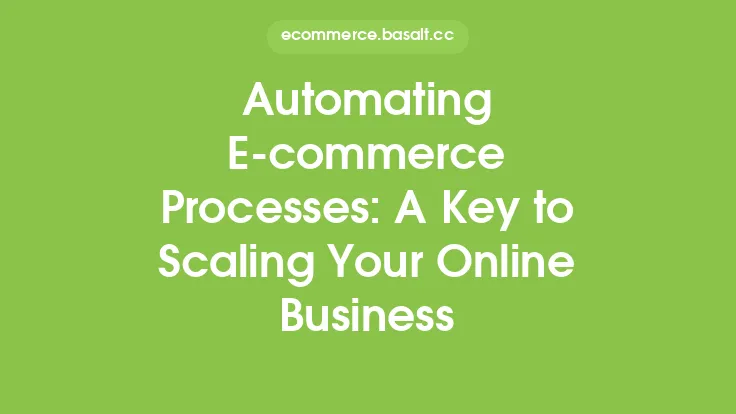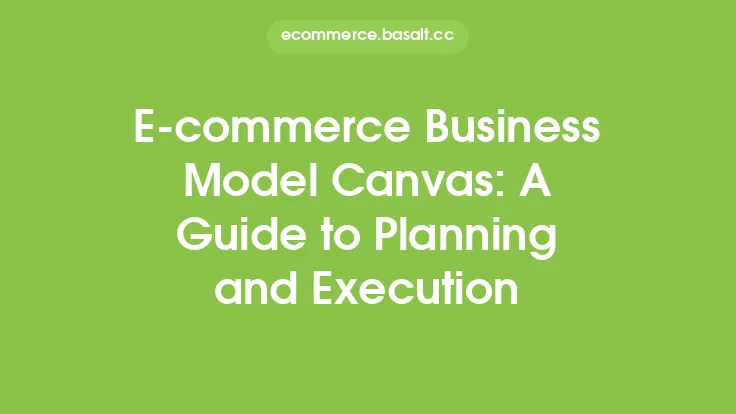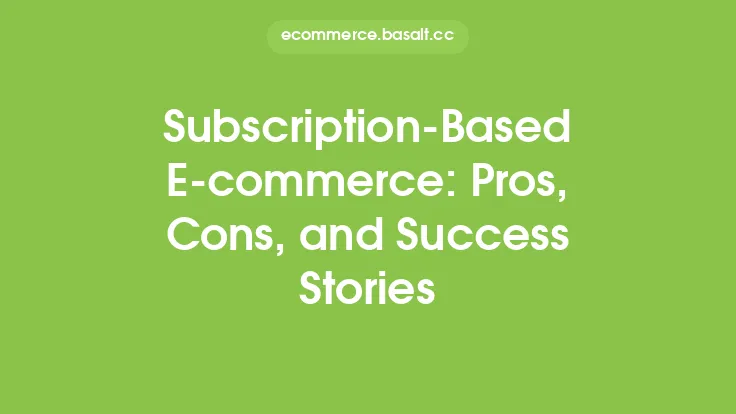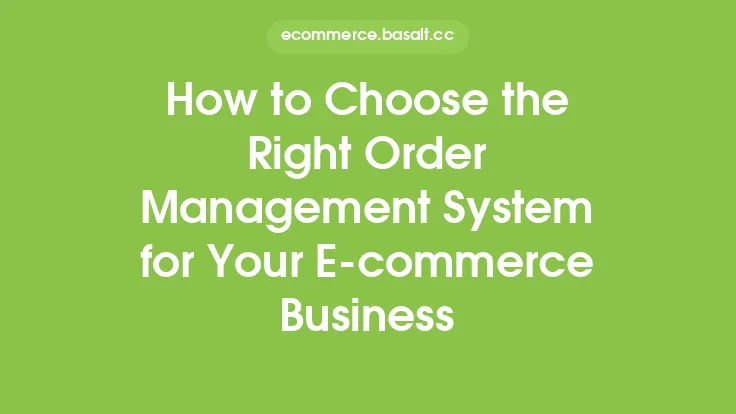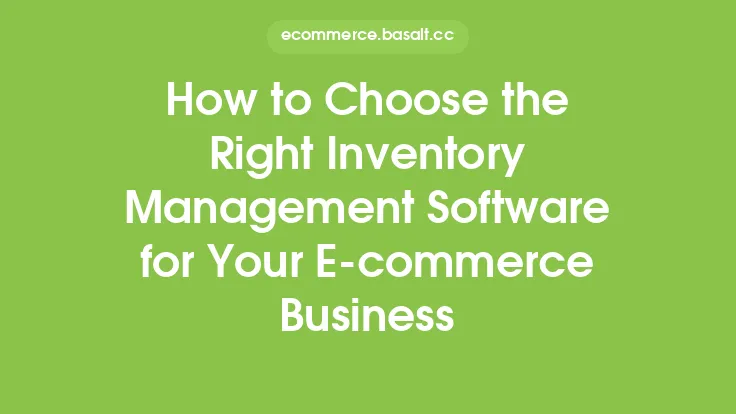Starting a successful subscription-based e-commerce business requires careful planning, execution, and ongoing management. At its core, a subscription-based model involves customers paying a recurring fee for access to products or services. This can be a highly profitable business model, as it provides a predictable revenue stream and encourages customer loyalty. To succeed, it's essential to understand the key elements of a subscription-based e-commerce business and how to implement them effectively.
Understanding the Benefits of Subscription-Based E-commerce
The benefits of a subscription-based e-commerce business are numerous. For one, it provides a predictable revenue stream, as customers are committed to paying a recurring fee. This allows businesses to better forecast revenue and plan for growth. Additionally, subscription-based models encourage customer loyalty, as customers are more likely to continue their subscription rather than seeking out alternative products or services. This can lead to increased customer retention rates and reduced churn. Furthermore, subscription-based models can provide valuable customer data, which can be used to inform product development, marketing strategies, and customer service initiatives.
Choosing the Right Subscription Model
There are several types of subscription models to choose from, each with its own unique characteristics and benefits. The most common models include:
- Product subscriptions: Customers receive a regular shipment of products, such as monthly deliveries of snacks or beauty products.
- Service subscriptions: Customers pay for access to a service, such as software or streaming platforms.
- Hybrid subscriptions: Customers receive a combination of products and services, such as a monthly delivery of products along with access to exclusive content or services.
- Tiered subscriptions: Customers can choose from different levels of subscription, each with its own set of benefits and features.
When choosing a subscription model, it's essential to consider the needs and preferences of your target market, as well as the capabilities and resources of your business.
Developing a Subscription-Based E-commerce Platform
To launch a subscription-based e-commerce business, you'll need to develop a platform that can handle recurring payments, subscription management, and customer communication. This can be achieved through the use of e-commerce software, such as Shopify or WooCommerce, which offer built-in subscription management tools. Alternatively, you can use a third-party subscription management platform, such as Recurly or Chargify, which can be integrated with your e-commerce platform. When developing your platform, it's essential to consider factors such as payment gateway integration, subscription plan management, and customer notification systems.
Marketing and Promoting Your Subscription-Based E-commerce Business
Marketing and promoting your subscription-based e-commerce business is crucial to attracting and retaining customers. This can be achieved through a variety of channels, including social media, email marketing, and influencer partnerships. It's essential to develop a unique value proposition that highlights the benefits of your subscription-based model, such as convenience, cost savings, and exclusive access to products or services. Additionally, you can offer incentives such as discounts, free trials, or loyalty rewards to encourage customers to sign up and stay subscribed.
Managing and Optimizing Your Subscription-Based E-commerce Business
Once your subscription-based e-commerce business is up and running, it's essential to continually manage and optimize its performance. This can be achieved through the use of analytics tools, which can provide insights into customer behavior, subscription rates, and revenue growth. You can also use customer feedback and surveys to identify areas for improvement and inform product development and marketing strategies. Additionally, it's essential to stay up-to-date with industry trends and best practices, such as changes in consumer behavior, advances in technology, and shifts in the competitive landscape.
Building a Strong Customer Relationship
Building a strong customer relationship is critical to the success of a subscription-based e-commerce business. This can be achieved through the use of personalized communication, such as tailored email campaigns and product recommendations. You can also use customer data to inform product development and marketing strategies, ensuring that your offerings meet the needs and preferences of your target market. Additionally, it's essential to provide excellent customer service, including timely and effective support, to ensure that customers feel valued and supported throughout their subscription journey.
Measuring Success and Growth
To measure the success and growth of your subscription-based e-commerce business, it's essential to track key performance indicators (KPIs) such as subscription rates, revenue growth, and customer retention rates. You can also use metrics such as customer acquisition cost, customer lifetime value, and churn rate to inform product development, marketing strategies, and customer service initiatives. By continually monitoring and analyzing these KPIs, you can identify areas for improvement and make data-driven decisions to drive growth and profitability.
Overcoming Common Challenges
Starting and running a subscription-based e-commerce business can be challenging, and there are several common obstacles to overcome. These can include high churn rates, difficulty in acquiring new customers, and challenges in managing recurring payments and subscription plans. To overcome these challenges, it's essential to stay focused on providing excellent customer service, continually monitoring and optimizing your platform and marketing strategies, and staying up-to-date with industry trends and best practices. By being proactive and adaptable, you can overcome common challenges and achieve long-term success with your subscription-based e-commerce business.
